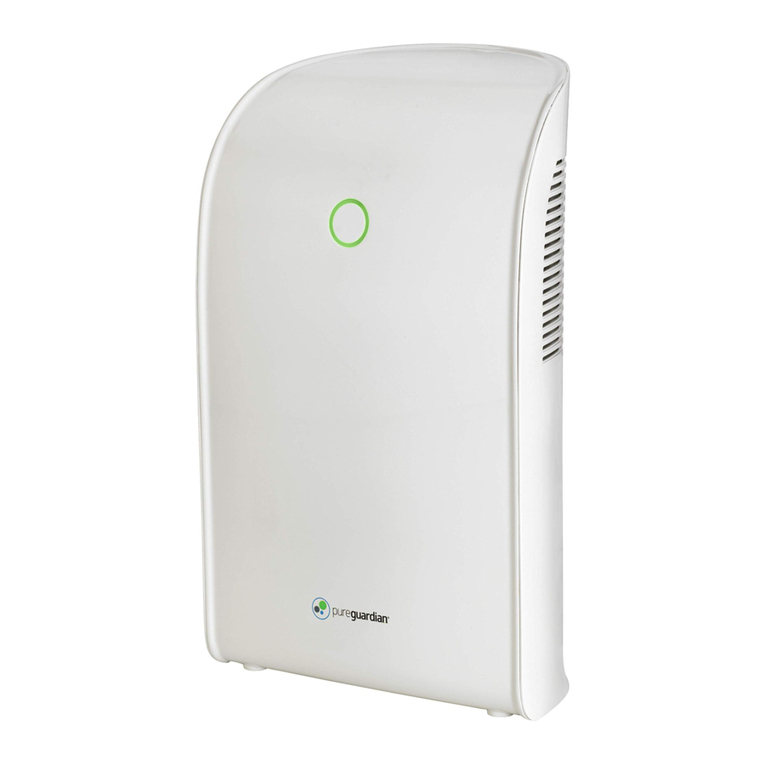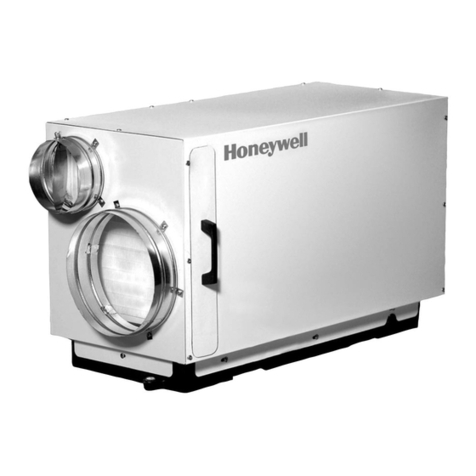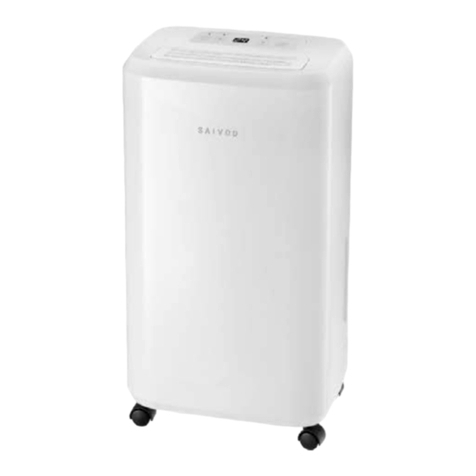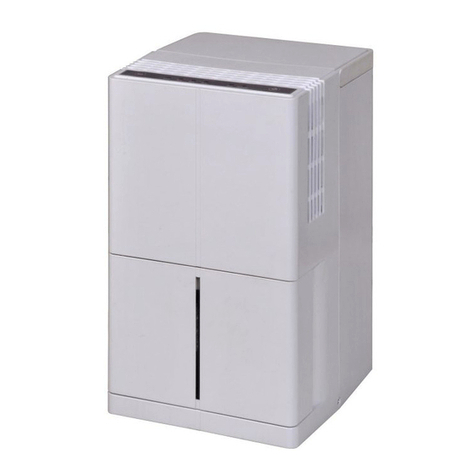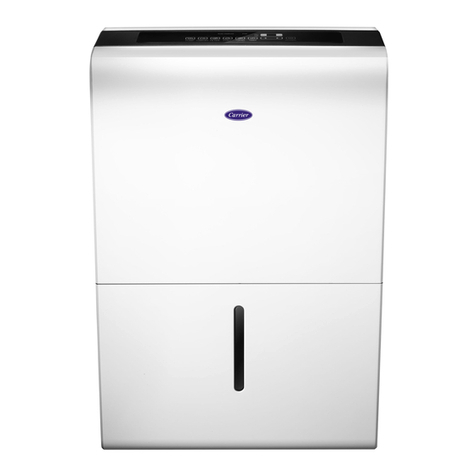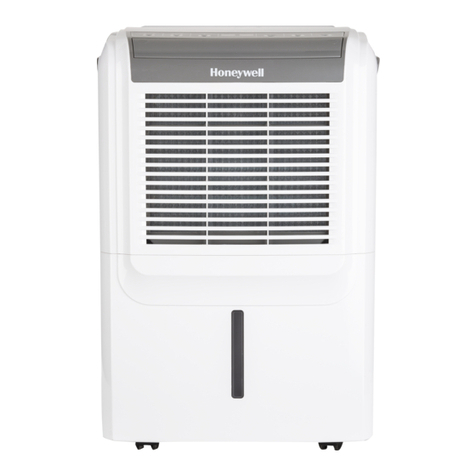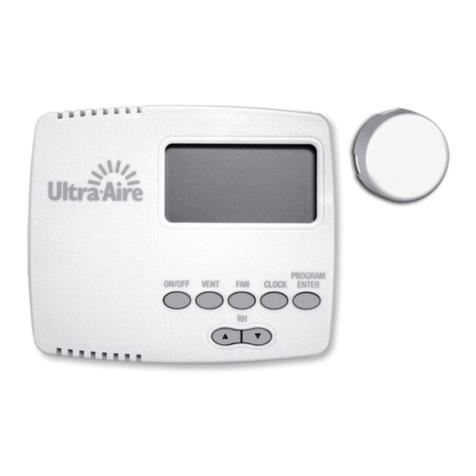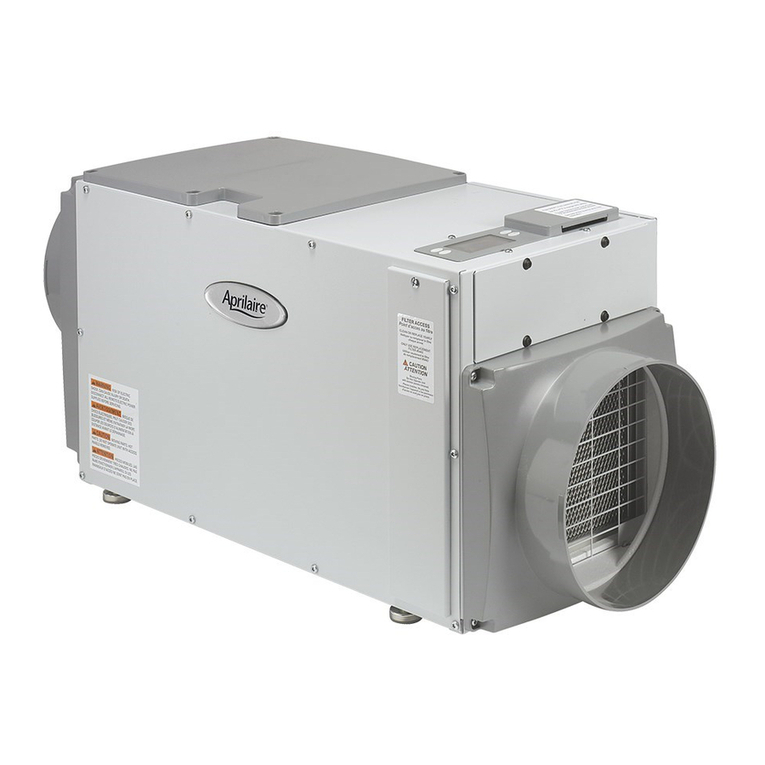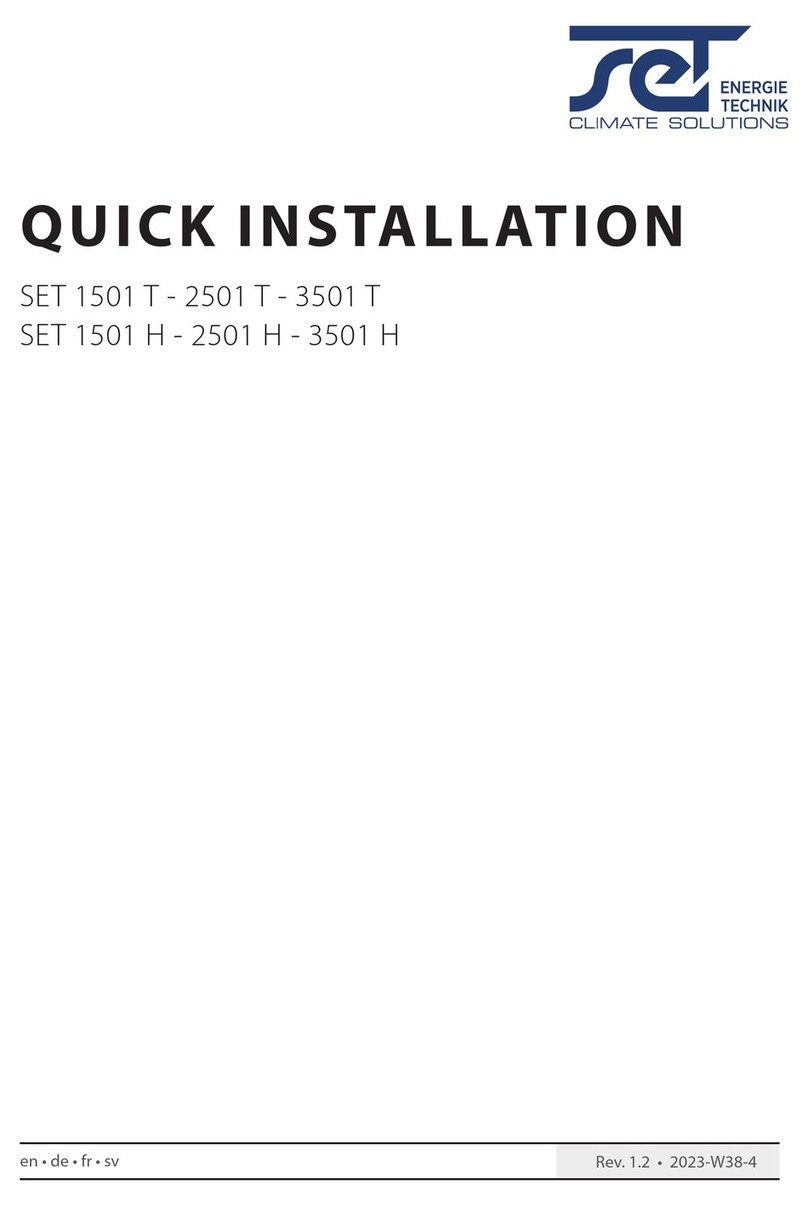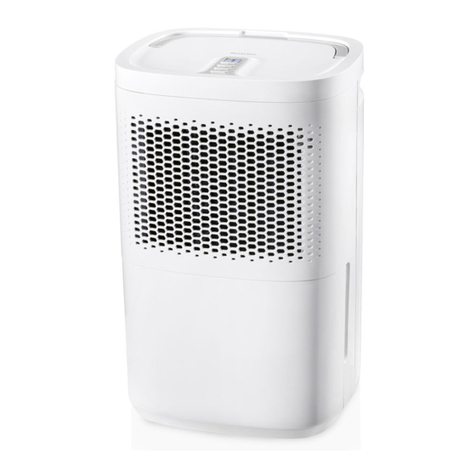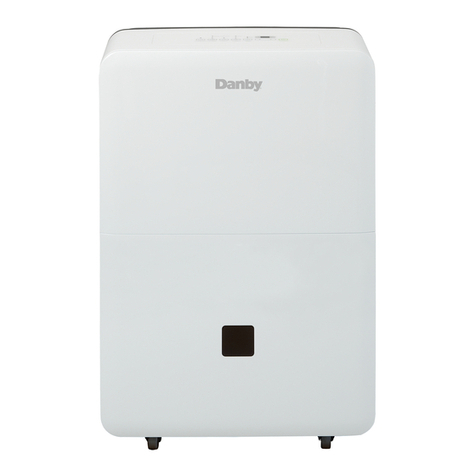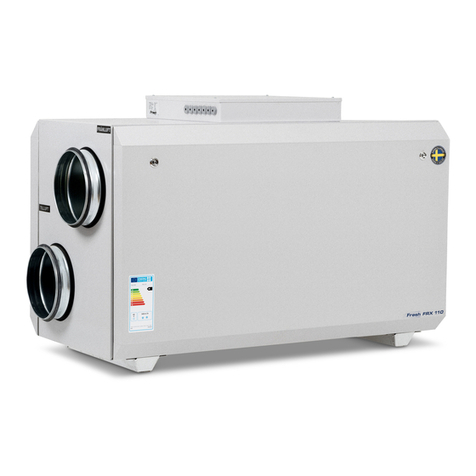BENDIX AD-9 Mounting instructions

1
®
SD-08-2412
AD-9 AIR DRYER
EXTENDED PURGE AD-9 AIR DRYER STANDARD AD-9 AIR DRYER
OUTER
SHELL
UPPER
BRACKET
LOWER
BRACKET
SUPPLY
PORT
WIRING HARNESS
CONNECTION
DELIVERY PORT
DESCRIPTION
The function of the AD-9 Air Dryer is to collect and remove
air system contaminants in solid, liquid and vapor form be-
fore they enter the brake system. It provides clean, dry air
to the components of the brake system which increases
the life of the system and reduces maintenance costs. Daily
manual drainin of the reservoirs is eliminated.
The AD-9 Air Dryer consists of a desiccant cartrid e and a
die cast aluminum end cover secured to a cylindrical steel
outer shell with ei ht cap screws and nuts. The end cover
contains a check valve assembly, a safety valve, three
threaded air connections and the pur e valve housin
assembly. The removable pur e valve housin assembly
incorporates a pur e valve mechanism and a turbo char er
cut-off feature that is desi ned to prevent loss of en ine
turbo boost pressure durin the pur e cycle of the AD-9 air
dryer. For ease of serviceability, the desiccant cartrid e and
dischar e check valve assembly are screw in type. The pur e
valve housin assembly, which includes the heater and
thermostat assembly, and the dischar e check valve
assembly, is serviceable from the exterior of the air dryer,
while servicin the screw-in desiccant cartrid e requires
removal of the air dryer assembly from the vehicle.
The AD-9 has three female pipe thread air connections and
each is identified as follows:
Port l.D. Function/Connection
CON 4............... Control Port
(pur e valve control and turbo cut-off).
SUP 11 ............. Supply Port (air in).
DEL 2 ............... Delivery Port (air out).
OUTER
SHELL
UPPER
BRACKET
LOWER
BRACKET
SUPPLY
PORT
WIRING HARNESS
CONNECTION
DELIVERY PORT
CHECK
VALVE
ASSEMBLY
END COVER
CHECK
VALVE
ASSEMBLY
END COVER
PORT
CONTROL
FIGURE 1 - AD-9 AIR DRYER MODELS
CONTROL
PORT

2
ORIFICE
PURGE
VOLUME
DELIVERY
PORT
HEATER
ELEMENT
SUMP
EXHAUST
PURGE
VALVE
RESERVOIR
SUPPLY
PORT
COMPRESSORGOVERNOR
ENGINE
TURBO
CONTROL
PORT
OIL
SEPARATOR
DESICCANT
BED
DESICCANT
CARTRIDGE
¬
¬
¬
¬
¬
¬
¬
¬
¬
¬
¬¬
¬
¬¬
¬
¬
¬
¬¬¬¬
¬¬¬¬
¬¬
¬¬
¬¬
¬
¬
CHECK
VALVE
OPERATION OF THE AD-9 AIR DRYER
The AD-9 air dryer alternates between two operational modes
or cycles durin operation: the charge cycle and the purge
cycle. The followin description of operation is separated
into these cycles of operation.
CHARGE CYCLE (refer to Figure 2)
When the compressor is loaded (compressin air)
compressed air, alon with oil, oil vapor, water and water
vapor flows throu h the compressor dischar e line to the
supply port of the air dryer end cover. As air travels throu h
the end cover assembly, its direction of flow chan es several
times, reducin the temperature, causin contaminants to
condense and drop to the bottom or sump of the air dryer
end cover.
After exitin the end cover, the air flows into the desiccant
cartrid e. Once in the desiccant cartrid e air first flows
throu h an oil separator which removes water in liquid form
as well as oil, oil vapor and solid contaminants.
Air exits the oil separator and enters the desiccant dryin
bed. Air flowin throu h the column of desiccant becomes
FIGURE 2 - AD-9 CHARGE CYCLE
pro ressively dryer as water vapor adheres to the desiccant
material in a process known as adsorption. The desiccant
cartrid e usin the adsorption process typically removes
95% of the water vapor from the pressurized air.
The majority of dry air exits the desiccant cartrid e throu h
its inte ral sin le check valve to fill the pur e volume between
the desiccant cartrid e and outer shell. Some air will also
exit the desiccant cartrid e throu h the pur e orifice adjacent
to the check valve.
Dry air flows out of the pur e volume throu h the sin le
check valve assembly and out the delivery port to the first
(supply) reservoir of the air system.
The air dryer will remain in the char e cycle until air brake
system pressure builds to the overnor cutout settin .
PURGE CYCLE (refer to Figure 3)
When air brake system pressure reaches the cutout settin
of the overnor, the compressor unloads (air compression
stopped) and the pur e cycle of the air dryer be ins. When
the overnor unloads the compressor, it pressurizes the
compressor unloader mechanism and line connectin the
¬
¬
¬
¬
¬
¬¬
¬¬
¬
¬
¬
CHECK
VALVE
ASSEMBLY

3
vapor adherin to it. Generally 15-30 seconds are required
for the entire pur e volume of a standard AD-9 to flow throu h
the desiccant dryin bed.
The end cover sin le check valve assembly prevents air
pressure in the brake system from returnin to the air dryer
durin the pur e cycle. After the 30 second pur e cycle is
complete, the air dryer is ready for the next char e cycle to
be in.
The pur e valve will remain open after the pur e cycle is
complete and will not close until air brake system pressure
is reduced and the overnor si nals the compressor to
char e.
TURBO CUT-OFF FEATURE (Refer to Figure 4)
The primary function of the turbo cut-off valve is to prevent
loss of en ine turbochar er air pressure throu h the AD-9 in
systems where the compressor intake is connected to the
en ine turbochar er. The turbo cut-off valve also reduces
the puffin of air out the open exhaust when a naturally
aspirated, sin le cylinder compressor equipped with an inlet
check valve is in use.
CHECK
VALVE ORIFICE
PURGE
VOLUME
DELIVERY
PORT
HEATER
ELEMENT
SUMP
EXHAUST
PURGE
VALVE
RESERVOIR
SUPPLY
PORT
COMPRESSORGOVERNOR
ENGINE
TURBO
CONTROL
PORT
OIL
SEPARATOR
DESICCANT
BED
DESICCANT
CARTRIDGE
¬
¬¬
¬¬
¬¬
¬
¬
¬
¬
¬¬
¬
¬¬
¬
¬
¬
¬
¬
¬
¬
¬
¬
¬
¬
¬
¬
TURBO
CUTOFF
PISTON
¬
CHECK
VALVE
ASSEMBLY
FIGURE 3 - AD-9 PURGE CYCLE
overnor unloader port to the AD-9 end cover control port.
The pur e piston moves in response to air pressure causin
the pur e valve to open to atmosphere and (partially) closin
off the supply of air from the compressor, this will be further
discussed in the section coverin the turbo cut-off feature.
Contaminants in the end cover sump are expelled
immediately when the pur e valve opens. Also, air which
was flowin throu h the desiccant cartrid e chan es direction
and be ins to flow toward the open pur e valve. Oil and solid
contaminants collected by the oil separator are removed by
air flowin from the desiccant dryin bed to the open pur e
valve.
The initial pur e and desiccant cartrid e decompression lasts
only a few seconds and is evidenced by an audible burst of
air at the AD-9 exhaust.
The actual reactivation of the desiccant dryin bed be ins
as dry air flows from the pur e volume throu h the desiccant
cartrid e pur e orifice and into the desiccant dryin bed.
Pressurized air from the pur e volume expands after passin
throu h the pur e orifice; its pressure is lowered and its
volume increased. The flow of dry air throu h the dryin bed
reactivates the desiccant material by removin the water
¬
¬
¬
¬
¬
¬

4
FIGURE 4 - AD-9 TURBO CUTOFF
At the onset of the pur e cycle, the downward travel of the
pur e piston is stopped when the turbo cut-off valve (tapered
portion of pur e piston) contacts its matin metal seat in
the pur e valve housin . With the turbo cut-off valve seated
(closed position), air in the dischar e line and AD-9 inlet
port is restricted from enterin the air dryer. While the turbo
cut-off effectively prevents loss of turbo char er boost
pressure to the en ine, some seepa e of air may be
detected under certain conditions of compressor en ine and
turbo char er operation, even so there will always be low
pressure trapped in the dischar e line.
PREVENT VE MA NTENANCE
Important: Review the warranty policy before performin
any intrusive maintenance procedures. An extended warranty
may be voided if intrusive maintenance is performed durin
this period.
Because no two vehicles operate under identical conditions,
maintenance and maintenance intervals will vary. Experience
is a valuable uide in determinin the best maintenance
interval for any one particular operation.
Every 900 operating hours or 2 ,000 miles or every three
(3) months:
1. Check for moisture in the air brake system by openin
reservoirs, drain cocks, or valves and checkin for
presence of water. If moisture is present, the desiccant
may require replacement; however, the followin
conditions can also cause water accumulation and
should be considered before replacin the desiccant:
A. An outside air source has been used to char e the
system. This air did not pass throu h the dryin bed.
UPPER
BRACKET
CHECK
VALVE
ASSEMBLY
SUPPLY
PORT
¬
¬
¬
¬
¬
¬
¬
¬
¬
¬
¬
¬
UPPER
BRACKET
STRAP
DESICCANT
CARTRIDGE
LOWER
BRACKET
HOUSING
CHECK
VALVE
ASSEMBLY
¬
DISCHARGE
LINE
TURBO
CUTOFF
PISTON
EXHAUST
PURGE
VALVE
TURBO
CUTOFF
PISTON
B. Air usa e is exceptionally hi h and not normal for a
hi hway vehicle. This may be due to accessory air
demands or some unusual air requirement that does
not allow the compressor to load and unload (com-
pressin and non-compressin cycle) in a normal
fashion. Check for hi h air system leaka e.
C. The air dryer has been installed in a system that
has been previously used without an air dryer. This
type system will be saturated with moisture and
several weeks of operation may be required to dry it
out.
D. Location of the air dryer is too close to the air com-
pressor. Refer to Locating AD-9 On Vehicle section.
E. In areas where more than a 30 de ree ran e of tem-
perature occurs in one day, small amounts of water
can accumulate in the air brake system due to con-
densation. Under these conditions, the presence of
small amounts of moisture is normal and should not
be considered as an indication that the dryer is not
performin properly.
Note: A small amount of oil in the system may be normal
and should not, in itself, be considered a reason to
replace the desiccant; oil stained desiccant can function
adequately.
2. Check mountin bolts for ti htness. Retorque to 270-
385 inch pounds.
PURGE VALVE
HOUSING
ASSEMBLY
PURGE
VALVE
DISCHARGE
PORT
FIGURE 5 - AD-9 AIR DRYER SECTIONAL VIEW
DESICCANT
BED
OIL
SEPARATOR
CONTROL
PORT
SUPPLY
PORT

5
3. Perform the Operation & Leakage Tests listed in this
publication.
Every 10,800 hours; 300,000 miles or 36 months:
1. Rebuild the air dryer includin the desiccant cartrid e.
Note: The desiccant chan e interval may vary from vehicle
to vehicle. Althou h typical desiccant cartrid e life is three
years, many will perform adequately for a lon er period of
time. In order to take maximum advanta e of desiccant life
and assure that replacement occurs only when necessary,
it is important that Operation & Leakage Tests be performed.
WARN NG!
This air dryer is intended to remove moisture and other
contaminants normally found in the air brake system. Do
not inject alcohol, anti-freeze, or other de-icin substances
into or upstream of the air dryer. Alcohol is removed by the
dryer, but reduces the effectiveness of the device to dry air.
Use of other substances can dama e the air dryer and may
void the warranty.
OPERAT ON & LEAKAGE TESTS
1. Test the outlet port check valve assembly by buildin
the air system to overnor cut-out and observin a test
air au e installed in the #1 reservoir. A rapid loss of
pressure could indicate a failed outlet port check valve.
This can be confirmed by bleedin the system down,
removin the check valve assembly from the end cover,
subject air pressure to the unit and apply a soap solution
to the check valve side. Leaka e should not exceed a 1
inch bubble in 1 second.
2. Check for excessive leaka e around the pur e valve.
With the compressor in loaded mode (compressin air),
apply a soap solution to the pur e valve housin
assembly exhaust port and observe that leaka e does
not exceed a 1 inch bubble in 1 second. If the leaka e
exceeds the maximum specified, service the pur e valve
housin assembly.
3. Close all reservoir drain cocks. Build up system pressure
to overnor cut-out and note that AD-9 pur es with an
audible escape of air. Fan the service brakes to reduce
system air pressure to overnor cut-in. Note that the
system once a ain builds to full pressure and is followed
by an AD-9 pur e.
4. Check the operation of the safety valve by pullin the
exposed stem while the compressor is loaded
(compressin air). There must be an exhaust of air while
the stem is held and the valve should reseat when the
stem is released.
5. Check all lines and fittin s leadin to and from the air
dryer for leaka e and inte rity.
LOWER
MOUNTING
BRACKET
AD-9
AIR DRYER
AD-9
END COVER
FEMALE
CONNECTOR
MALE
CONNECTOR
LATCH MUST BE
INSERTED UNTIL
IT SNAPS OVER
TAB ON MATING
CONNECTOR
SIDE VIEW END VIEW
A two lead, 12 inch, wire harness with attached weather
resistant connector is supplied with all retrofit and
replacement AD-9 Air Dryers. Connect one of the two
leads of the wire harness to the en ine kill or i nition
switch. The remainin lead of the wire harness must
be connected to a ood vehicle round. A fuse should
be installed in the power carryin wire; install a 10 amp
fuse for 12 volt heaters and a 5 amp fuse for a 24 volt
heater.
Use 14 AWG wire if it is necessary to len then the wire
harness provided.
Make certain all wire splices are waterproofed.
Tie wrap or support all electrical wire leadin to the
AD-9.
FIGURE 6 - HEATER AND THERMOSTAT CONNECTOR
6. Check the operation of the end cover heater and
thermostat assembly durin cold weather operation as
follows:
A. Electric Power to the Dryer
With the i nition or en ine kill switch in the ON posi-
tion, check for volta e to the heater and thermostat
assembly usin a voltmeter or test li ht. Unplu the
electrical connector at the air dryer and place the
test leads on each of the pins of the male connector.
If there is no volta e, look for a blown fuse, broken
wires, or corrosion in the vehicle wirin harness.
Check to see if a ood round path exists.
B. Thermostat and Heater Operation
Turn off the i nition switch and cool the end cover
assembly to below 40 de rees Fahrenheit. Usin an
ohmmeter, check the resistance between the elec-
trical pins in the female connector. The resistance
should be 1.5 to 3.0 ohms for the 12 volt heater as-
sembly and 6.8 to 9.0 ohms for the 24 volt heater

6
assembly. Note: Some early models o the AD-9
will have resistance readings o 1.0 to 2.5 ohms or
the 12 volt heater assembly and 4.8 to 7.2 ohms or
the 24 volt heater assembly. I the resistance is higher
than the maximum stated, replace the purge valve
housing assembly, which includes the heater and
thermostat assembly.
Warm the end cover assembly to over 90 de rees
Fahrenheit and a ain check the resistance. The re-
sistance should exceed 1000 ohms. If the resistance
values obtained are within the stated limits, the ther-
mostat and heater assembly is operatin properly. If
the resistance values obtained are outside the stated
limits, replace the pur e valve housin assembly,
which includes the heater and thermostat assem-
bly.
REBUILDING THE AD-9 AIR DRYER
GENERAL
If, after completin the routine operation and leaka e tests,
it has been determined that one or more components of the
air dryer requires replacement or maintenance, refer to the
followin list to find the appropriate kit(s).
When rebuildin or replacin components of the air dryer
use only enuine Bendix parts. For ease in servicin the
AD-9 desiccant cartrid e assembly, it is recommended that
the air dryer be removed from the vehicle.
MA NTENANCE K TS AVA LABLE:
5005037Hard Seat Pur e Valve Housin Maintenance Kit
5005893Soft Seat Pur e Valve Housin Maintenance Kit
These kits contain the parts necessary to rebuild
the air portion of the pur e valve housin and do not
include the heater and thermostat.
107794 Desiccant Cartrid e Replacement Kit
This kit contains the parts necessary to chan e
the desiccant cartrid e only.
107796 Remanufactured Desiccant Cartrid e
Replacement Kit
This kit contains the parts necessary to chan e
the desiccant cartrid e only.
107799 End Cover Check Valve Assembly Replacement
3/4 inch thread size.
107800 End Cover Check Valve Assembly Replacement
1/2 inch thread size.
800405 Service New or Remanufactured Exchan e Pur e
Valve Housin Assembly - Soft Seat (w/heater
and thermo.) 12 volt system.
5004479Service New or Remanufactured Exchan e Pur e
Valve Housin Assembly - Hard Seat (w/heater
and thermo.) 12 volt system.
5004339Service New or Remanufactured Exchan e Pur e
Valve Housin Assembly - DLU (w/heater and
thermo.) 12 volt system.
5004338Service New or Remanufactured Exchan e Pur e
Valve Housin Assembly - Soft Seat (w/heater and
thermo.) 24 volt system.
5004480Service New or Remanufactured Exchan e Pur e
Valve Housin Assembly - Hard Seat (w/heater and
thermo.) 24 volt system.
5004340Service New or Remanufactured Exchan e Pur e
Valve Housin Assembly - DLU (w/heater and
thermo.) 24 volt system.
107695 Complete Mountin Bracket Kit
This kit contains the upper and lower brackets as
well as the necessary hardware items to mount
them.
IMPORTANT! PLEASE READ AND FOLLOW
THESE INSTRUCTIONS TO AVOID
PERSONAL INJURY OR DEATH:
When working on or around a vehicle, the following
general precautions should be observed at all times:
1. Park the vehicle on a level surface, apply the
parking brakes, and always block the wheels.
2. Stop the engine when working around the vehicle.
3. If the vehicle is equipped with air brakes, make
certain to drain the air pressure from all reservoirs
before beginning ANY work on the vehicle.
4. Following the vehicle manufacturers
recommended procedures, deactivate the electrical
system in a manner that removes all electrical
power from the vehicle.
. When working in the engine compartment the
engine should be shut off. Where circumstances
require that the engine be in operation, EXTREME
CAUTION should be used to prevent personal injury
resulting from contact with moving, rotating,
leaking, heated, or electrically charged
components.
6. Never connect or disconnect a hose or line
containing pressure; it may whip. Never remove a
component or plug unless you are certain all
system pressure has been depleted.
7. Never exceed recommended pressures and always
wear safety glasses.
8. Do not attempt to install, remove, disassemble or
assemble a component until you have read and
thoroughly understand the recommended
procedures. Use only the proper tools and observe
all precautions pertaining to use of those tools.

7
FIGURE 7 - AD-9 AIR DRYER ASSEMBLY
NOTE: NUMBERS 9 AND 12
NOT USED
7
1 O-RING
2 EXHAUST DIAPHRAGM
3 1 4" TAPPING SCREW
4 PURGE VALVE LOCK NUT
5 O-RING
6 O-RING
7 O-RING
8 PURGE VALVE ASSEMBLY
10 O-RING
11 PURGE VALVE
13 SPRING
14 O-RING
15 CHECK VALVE ASSEMBLY
16 3 8" CAP SCREW
17 3 8" SPECIAL WASHER
18 3 8" CAP SCREW (LONG)
19 LOCK NUT
20 LOWER MOUNTING BRACKET
21 O-RING
22 DESICCANT CARTRIDGE
COMPLETE
23 O-RING
24 HOUSING
25 5 16" X 4-1 2" UPPER BRACKET
CAP SCREW
26 UPPER BRACKET STRAP
27 UPPER MOUNTING BRACKET
28 5 16" LOCK WASHER
29 5 16" LOCK NUT
30 EXHAUST COVER
31 TORX HEAD BOLT
32 EXHAUST DIAPHRAGM WASHER
33 PURGE PISTON
4
32
3
30
13
33
14
10
11
2
18
31
5
15
17
20
17
1
6
16
SAFETY
VALVE
23
21
22
END
COVER
25
26
28
29
27
24
19
17
8

8
9. Use only genuine Bendix replacement parts,
components, and kits. Replacement hardware,
tubing, hose, fittings, etc. should be of equivalent
size, type, and strength as original equipment and
be designed specifically for such applications and
systems.
10. Components with stripped threads or damaged
parts should be replaced rather than repaired.
Repairs requiring machining or welding should not
be at tempted unless specifically approved and
stated by the vehicle or component manufacturer.
11. Prior to returning the vehicle to service, make
certain all components and systems are restored
to their proper operating condition.
AD-9 REMOVAL
1. Park the vehicle on a level surface and prevent movement
by means other than the brakes.
2. Drain all reservoirs to 0 p.s.i. (0 kPa). Caution:
Compressor dischar e line may still contain residual
pressure.
3. Identify and disconnect the three air lines from the end
cover and note the position of end cover ports relative to
the vehicle.
4. Unplu the vehicle wirin harness from the heater and
thermostat assembly connector on the pur e valve
housin assembly.
5. Loosen the 5/16" X 4-1/2" hex bolt securin the upper
mountin strap.
6. Remove, retain and mark the two 3/8" end cover cap
screws, lock nuts and four special washers that retain
the lower mountin bracket to the end cover, also mark
these two holes of the end cover. (These bolts are lon er
than the other 6 bolts.)
7. Remove the AD-9 air dryer from its mountin brackets
on the vehicle.
D SASSEMBLY
The followin disassembly and assembly procedure is
presented for reference purposes and presupposes that a
major rebuild of the AD-9 is bein undertaken. Several
replacement parts and maintenance kits are available which
do not require full disassembly. The instructions provided
with these parts and kits should be followed in lieu of the
instructions presented here. Refer to Fi ure 7 durin
disassembly.
Caution: While performin service on the AD-9 air dryer, it
is not recommended that a clampin device (vise, C-clamp,
etc.) be used to hold any die cast aluminum component as
dama e may result. To hold the end cover, install a pipe
nipple in the supply port and clamp the nipple into a vise.
1. Usin an adjustable wrench or an 1-3/4" socket, remove
the delivery, check valve assembly (15) and o-rin .
Remove the o-rin from the check valve assembly.
2. Remove the three 1/4" self tappin screws (3) that secure
the pur e valve housin assembly to the end cover
assembly. Pull the pur e valve housin assembly out of
the end cover assembly. Remove the three o-rin s (5,6 &
7) from the exterior of the pur e valve housin assembly.
Note: O-rin s 5 and 6 may be lod ed in the end cover
bores, if so, they must be removed
3. Pur e Valve Disassembly:
Note: In most cases a flat (non-extended) exhaust cover
(30) is used. This cover should be left intact while
servicin the pur e valve housin assembly. However, if
an extended type exhaust cover is in use to
accommodate the attachment of an exhaust hose, the
exhaust cover must be carefully peeled off the pur e
valve housin . Use a thin flat blade to pry the exhaust
cover off, taking care not to damage the potting
material (RTV sealant) under the cover. To remove
the piston from the pur e valve housin assembly requires
a special Torx head socket or a twelve point 1/4" socket
to hold the head of the pur e valve bolt (31).
A. Remove the 1/4" nut (4) from the bottom of the pur e
valve housin assembly usin a 9/16" socket wrench
and a Torx head socket to hold the head of the bolt
(31). Remove the diaphra m washer (32) (if present),
and the diaphra m (2) (if present), and the pur e
valve (11) from the pur e valve housin .
B. Remove the 1/4" Torx head bolt (31) from the oppo-
site end, then the pur e piston (33), the return sprin
(13) and two o-rin s (10 & 14); one on the O.D. and
the other in the inside of the pur e piston.
C. Heater and Thermostat Assembly Replacement.
Caution: Do not attempt to remove this assembly,
as it will be dama ed durin the removal process
and is not available as a service part. If the heater
and thermostat are defective, replace the entire pur e
valve housin assembly which includes these items.
4. Remove the remainin six 3/8" cap screws (16), lock
nuts (19) and twelve special washers (17) that secure
the end cover to the housin (24). Separate the end cover
and desiccant cartrid e (22) from the housin (24).
5. Remove the end cover to outer housin o-rin (23).
6. Do not remove the safety valve from the end cover unless
it has been proven defective. If replacement is required,
apply thread sealant or teflon tape on the threads of the
replacement valve and torque to 120-400 in. Ibs.
7. Place a strap or chain wrench around the desiccant
cartrid e (22) so that it is approximately 2-3 inches away
from the end cover. Rotate the cartrid e counterclockwise
until it completely separates from the end cover. Note:
A substantial torque (up to 50 lb. t.) may be required to
per orm this disassembly.

9
8. Remove the desiccant cartrid e o-rin (21) from the end
cover.
CLEAN NG & NSPECT ON
1. Usin mineral spirits or an equivalent solvent, clean and
thorou hly dry all metal parts.
2. Inspect the interior and exterior of all metal parts that
will be reused for severe corrosion, pittin and cracks.
Superficial corrosion and or pittin on the exterior portion
of the upper and lower body halves is acceptable.
3. Inspect the bores of both the end cover and the pur e
valve housin for deep scuffin or ou es.
4. Make certain that all pur e valve housin and end cover
passa es are open and free of obstructions.
5. Inspect the pipe threads in the end cover. Make certain
they are clean and free of thread sealant.
6. Inspect the pur e valve housin bore and seats for
excessive wear and scuffin .
7. Inspect the pur e valve piston seat for excessive wear.
8. Inspect all air line fittin s for corrosion. Clean all old
thread sealant from the pipe threads.
9. All o-rin s removed should be discarded and replaced
with new o-rin s provided in appropriate kit(s).
Any component exhibitin a condition described in step 1
to 8 should be replaced.
ASSEMBLY
Prior to assembly, coat all o-rin s, o-rin rooves, and bores
with a enerous amount of barium base lubricant. Refer to
Fi ure 7 durin assembly unless otherwise advised.
1. Pur e Valve Housin Assembly
A. Install the o-rin (14) in its roove on the O.D. of the
pur e piston. Place the return sprin (13) in the bore
of the pur e valve housin . Place the o-rin (10) into
its recess in the bore of the pur e piston. Install the
1/4" Torx head bolt (31) into the l.D. of the pur e
piston. Insert the pur e piston (33) into the l.D. of
the sprin (13). Usin a Torx head wrench, push the
pur e piston into the piston housin until it bottoms.
B. While depressin the pur e piston with the Torx head
wrench, install the followin parts over the pur e valve
bolt (31) from the opposite end of the pur e valve
housin ; the pur e valve (11) with its rubber side first,
followed by the diaphra m (2) (if present), the dia-
phra m washer (32) (if present) or the flat washer
and finally the 1/4" hex nut (4). Torque the pur e
valve nut and bolt (4 & 31) to between 60-80 in. Ibs.
C. Install the three o-rin s (5, 6 & 7) on the pur e valve
housin placin each in its appropriate location. If
the exhaust cover (30) was removed durin disas-
sembly, install it on the pur e valve housin assem-
bly makin certain the bubble portion is positioned
over the thermostat. Install the assembled pur e valve
housin in the end cover makin certain to orient
both parts such that the connector is approximately
10 de rees clockwise from the supply port, while
makin certain the pur e valve housin is fully seated
a ainst the end cover. Secure the pur e valve hous-
in to the end cover usin the three 1/4" self-tappin
screws (3). Start all three screws by hand then
torque to 50-80 in. Ibs.
2. Install the o-rin on the check valve assembly (15), then
install the assembly in the end cover.
3. Install the desiccant cartrid e o-rin (21) in its roove in
the end cover. Usin a li ht coat of barium rease,
lubricate the bottom of the desiccant cartrid e in the
area that will contact the o-rin (21) and end cover. Screw
the desiccant cartrid e into the end cover until contact
is made between it and the o-rin . Usin a strap or chain
wrench positioned 2-3" from the bottom of the cartrid e,
turn the desiccant cartrid e clockwise 180-225 de rees
beyond the position where initial contact was made
between the cartrid e and end cover o-rin . Torque should
not exceed 50 ft. Ibs.
4
FIGURE 8 - END COVER TO HOUSING TORQUE PATTERN
78
3
5
62
1&9

10
4. Install the end cover outer housin o-rin (23) on the
shoulder in the end cover. Place the housin (24) over
the desiccant cartrid e and ali n the holes. Install the
six 3/8" cap screws (16), lock nuts (19) and twelve special
washers (17) makin certain they are in the proper
position as marked durin disassembly. The two lon er
3/8" cap screws (18) will be used to secure the AD-9 to
its mountin bracket. Ti hten the six cap screws and
nuts in a star pattern in a fashion similar to Fi ure 8;
dependin on lower bracket location. Torque to 270-385
in. Ibs. (Refer to Fi . 8.) Note: The two remainin bolt
holes in the end cover and two 3/8" cap screws must be
the ones marked durin disassembly to assure proper
orientation of the ports and adequate len th of the cap
screws.
NSTALLAT ON
1. Install the assembled AD-9 air dryer back onto the vehicle
by slippin it into the upper mountin bracket. Ali n the
two unused holes in the end cover with the bottom
mountin bracket such that the bottom bracket supports
air dryer. The AD-9 end cover should rest on the bracket.
Usin the remainin two 3/8" cap screws (18), four special
washers (17), and two lock nuts (19), secure the air
dryer to the lower bracket. Ti hten, then torque the two
remainin cap screws to 270-385 in. Ibs.
2. Ti hten the 5/16" X 4-1/2" bolt and nut on the upper
mountin bracket. Torque to 80-120 in Ibs.
3. Reconnect the three airlines to the proper ports on the
end cover (identified durin disassembly).
4. Reconnect the vehicle wirin harness to the AD-9 heater
and thermostat assembly connector by plu in it into
the air dryer connector until its lock tab snaps in place.
5. Before placin vehicle back into service, perform the
Operation and Leakage Tests stated elsewhere in this
manual.
RETROFITTING THE AD-9 AIR DRYER
GENERAL
The followin retrofit instructions are presented for reference
purposes only since Bendix aftermarket retrofit and
replacement air dryers are packa ed with the most up-to-
date installation instructions. The instructions packa ed with
the AD-9 should be followed in lieu of those presented here.
The precedin portion of this manual deals with in-service
repair and or replacement of the AD-9 air dryer. The portion
of the manual that follows is concerned with installin an
AD-9 on a vehicle not previously equipped with one.
VEH CLE APPL CAT ON REQU REMENTS
The basic application requirements presented here apply to
a standard air dryer installation. The majority of hi hway
vehicles in use today will meet these basic requirements
however, some may not. Examples of vehicles that may not
meet the requirements include, bulk trailer unloadin
operations and other hi h air consumption/continuous flow
systems. While the AD-9 air dryer can be used on these
vehicles the standard installation procedure presented in
this manual may require modification to assure proper
operation and service life. Consult your local authorized
Bendix parts outlet or sales representative for additional
information.
1. Char e Cycle Time - The AD-9 air dryer is desi ned to
provide clean, dry air for the brake system. When a
vehicles air system is used to operate non-brake air
accessories it is necessary to determine that durin
normal, daily operation the compressor should recover
from overnor cut-in to overnor cut-out (usually 100
psi to 120 psi) in 90 seconds or less at en ine RPMs
commensurate with the vehicle vocation. If the recovery
time consistently exceeds this limit, it may be
necessary to bypass the air accessory responsible for
the hi h air usa e. Consult your local authorized Bendix
parts outlet or sales representative for additional
information.
2. Pur e Cycle Time - Durin normal vehicle operation, the
air compressor must remain unloaded for a minimum
of 20 seconds for the standard AD-9 Air Dryer or 30
seconds for the Extended Purge model. These
minimum pur e times are required to ensure complete
re eneration of the desiccant material. If the pur e time
is occasionally shorter than the times specified, no
permanent ill effect should be expected, however, if the
pur e time is consistently less than the minimum, an
accessory by-pass system must be installed.
3. European Air Brake Systems - Brake systems that
incorporate compressors without inte ral unloadin
mechanisms and/or utilize a compressor dischar e line
unloader valve have special AD-9 air dryer installation
requirements. Consult your local authorized Bendix parts
outlet or sales representative for additional information.
4. Air Compressor Size - Althou h the AD-9 air dryer can
be used in conjunction with lar er compressors, it was
desi ned primarily for units rated for up to 17 CFM. It is
recommended that when usin the AD-9 air dryer with a
compressor which has a rated displacement exceedin
17 CFM that an authorized Bendix parts outlet or Bendix
marketin representative be contacted for assistance.
5. Holset E or QE Type Air Compressors - In order for the
AD-9 to function properly when installed with the Holset
Type E or QE compressor, several specialized Holset
components are required. Consult your local authorized
Holset parts outlet or sales representative for additional
information.
6. Use of Standard or Extended Pur e AD-9 - Use the
followin uidelines:

11
5. When choosin the mountin location for the AD-9, note
the dischar e line len th requirements stated under the
headin Connecting the Air Lines, elsewhere in this
instruction sheet.
Important Note: Under normal operatin conditions, the
maximum inlet air temperature for the AD-9 air dryer is
150 de rees Fahrenheit.
MOUNT NG THE AD-9
1. To install the lower mountin bracket on the AD-9 air
dryer, it will be necessary to remove and discard two of
the end cover bolts and lock nuts. To determine which
end cover bolts to utilize to attach the lower bracket,
take into consideration the pipin connections required
to install the AD-9 air dryer and use those that will best
position the unit for ease of installation. Locate the
bracket such that it cradles the end cover as shown in
Fi ure 2. Utilizin the two 2-3/8" lon cap screws, lock
nuts and special washers provided with the AD-9 air dryer
retrofit unit, attach the lower mountin bracket and torque
to 270-385 in. lbs.
2. Assemble the mountin strap and upper mountin
bracket as illustrated in Fi ure 4, by utilizin the 5/16"
cap screw, 5/16" lockwasher and 5/16" nut provided.
3. Place the upper bracket assembly onto the shell of the
AD-9 air dryer and orient it so that it bears entirely on
the cylindrical surface and does not extend onto the
domed top. The slot spacin between the upper and
lower bracket should be a minimum of 5.5 inches apart.
Do not ti hten strap onto the shell at this time.
BRACKET
Total Vehicle Reservoir
Volume Requirement
Less than 9,000 cu. in. .................. Standard AD-9
9,000 - 12,500 cu. in. ........................... Extended Purge AD-9
Greater than 12,500 cu. in. ............ Contact Bendix Rep. or
Bendix ngineering
VEH CLE PREPARAT ON
1. Park the vehicle on a level surface and prevent movement
by means other than the brakes.
2. Drain all reservoirs to 0 p.s.i. (0 kPa).
LOCAT NG AD-9 ON VEH CLE
1. The AD-9 air dryer must be mounted vertically (pur e
exhaust toward road surface) outside the en ine
compartment in an area of air flow while the vehicle is in
motion. The AD-9 must not be exposed to direct wheel
splash (located behind axle mud flap is acceptable).
2. Locate the AD-9 air dryer as close to the first (supply)
reservoir as possible.
3. Do not locate the AD-9 air dryer near heat producin
components such as the vehicle exhaust and make
certain adequate clearance from movin components
(e. . drive shaft, suspension, pitman arm, etc.) is
provided.
2-1 8"
END
COVER
LOWER
BRACKET
EXTRA
LONG
BRACKET
CAP SCREW
¬
¬
SPECIAL
WASHER
FIGURE 9 - LOWER BRACKET INSTALLATION
4. Locate the AD-9 air dryer on vehicle so that a minimum
of 11 inches (28 CM) clearance below the end cover is
available to allow servicin . Alternatively, provide access
to the bracket bolts so the unit may be removed for
servicin . FIGURE 10 - UPPER MOUNTING BRACKET AND STRAP
5 16" CAP
SCREW
NUT
STRAP
LOCK WASHER

12
4. A universal mountin plate (Pc. No. 248478) is available
to facilitate the mountin of the AD-9 air dryer to the
vehicle. It can be obtained throu h an authorized Bendix
parts outlet.
5. Mount the AD-9 air dryer on the vehicle usin 3/8" bolts
( rade 5 min.) and washers. Torque to 25 ft. Ibs. (300
inch pounds.) After positionin and mountin the upper
bracket assembly accordin to the installation
requirements, torque the 5/16" nut to 80120 in. Ibs. to
ti hten strap onto the shell.
CONNECTING THE AIR LINES
PURGE CONTROL L NE
1. Install a Pur e Control air line havin a minimum inside
diameter of 3/16 inches between the AD-9 end cover
control port and an unused unloader port on the overnor.
The control line must be plumbed direct to the overnor
and not in series with automatic drain valves, lubrication
systems, etc.
2. The control line should slope downward to the end cover
without formin potential water traps.
D SCHARGE L NE
General:
Where minimum diameter are specified, lar er line diameters
enerally improve performance and life and reduce
temperatures, particularly in severe applications.
1. The dischar e line material should be wire braided Teflon
hose, copper tubin or a combination of both.
2. The dischar e line should slope downward from the
compressor dischar e port to the AD-9 air dryer supply
port without formin water traps, kinks or restrictions.
Cross-overs from one side of the frame rail to the other,
if required, should occur as close as possible to the
compressor.
3. Fittin extensions must not be installed at the AD-9
supply port.
4. Dischar e line len ths and inside diameter requirements
are dependent on the vehicle application and are as
follows:
FIGURE 2 - AD-9 CHARGE CYCLE
COMPRESSOR
10 AMP - 12V
5 AMP - 24V
SUP
CON
14 GA WIRE
TO IGNITION
& GROUND
SAFETY VALVE
DEL TO RESERVOIR
#2
RESERVOIR
#1
GOVERNOR
UNLOADER
PORT
DELIVERY
SUPPLY
CONTROL
(HIDDEN)
FUSE

13
Typical P&D, School Bus and Line Haul
The minimum discharge line length is 6 feet and the maximum is 16 feet.
LENGTH l.D. MIN. OTHER REQUIREMENTS
6.0 - 9.5 ft. ......... 1 2 in. ...........None
9.5 - 12 ft............ 1 2 in. ...........Last 3 feet including Supply Port fitting must
be insulated with 1 2 inch thick closed cell
polyethylene pipe insulation.
12 - 16 ft. ............ 5 8 in. ...........Last 3 feet including Supply Port fitting must
be insulated with 1 2 inch thick closed cell
polyethylene pipe insulation.
If the discharge line length ust be less than 6 feet or greater
than 16 feet, contact your local Bendix representative or
authorized parts outlet for further infor ation.
High Duty Cycle Vehicles
(City Transit Coaches, Refuse Haulers, etc.)
The minimum discharge line length is 10 feet and the maximum is 16 feet.
LENGTH l.D. MIN. OTHER REQUIREMENTS
10-16 ft. ........ 1 2 in. ........ None
If the discharge line length ust be less than 10 feet or greater
than 16 feet, contact your local Bendix representative or
authorized parts outlet for further infor ation.
DEL VERY L NE
1. Install an air line of the same approximate l.D. as the
dischar e line between the AD-9 air dryer delivery port
and the first (supply) reservoir. This line should also slope
downward to the reservoir, if possible.
EXHAUST L NE
1. If it is necessary to direct AD-9 air dryer dischar e
contaminants away from vehicle components it may be
necessary to purchase a special exhaust cover for the
AD-9 air dryer (Pc. No. 298924) to replace the standard
exhaust cover furnished with the unit. A 1 inch (25.4
mm) I.D. hose can be clamped on the special AD-9 air
dryer exhaust cover. Note: Use a thin flat blade to pry
the standard exhaust cover off.
W R NG THE HEATER/THERMOSTAT
1. Determine the vehicles electrical system volta e and
make certain that the AD-9 air dryer that is to be installed
contains the same volta e heater. Use the AD-9 air dryer
part number to confirm the proper volta e. The AD-9 air
dryer is available with either a 12 or 24 volt heater which
uses 75 watts of power.
2. A two lead, 12 inch, wire harness with attached weather
resistant connector is supplied with all retrofit and
replacement AD-9 air dryers. Connect one of the two
leads of the wire harness to the en ine kill or i nition
switch. The remainin lead of the wire harness must be
connected to a ood vehicle round (not to the air dryer
or its mountin bracket). A fuse should be installed in
the power carryin wire; install a 10 amp fuse for 12 volt
heaters and a 5 amp fuse for a 24 volt heater.
3. Use 14 GA wire if it is necessary to len then the wire
harness provided with the AD-9 air dryer. Make certain
all wire splices are waterproofed.
4. Tie wrap or support all electrical wire leadin to the AD-
9 air dryer at 6 - 8 inch intervals. Note: Wires should
have sufficient slack and not completely tau ht.
TEST NG THE AD-9
Before placin the vehicle in service, perform the followin
tests:
1. Close all reservoir drain cocks.
2. Build up system pressure to overnor cut-out and note
that the AD-9 air dryer pur es with an audible escape of
air.
3. Fan the service brakes to reduce system air pressure
to overnor cut-in. Note that the system once a ain builds
to full pressure and is followed by a pur e at the AD-9 air
dryer exhaust.
4. It is recommended that the followin items be tested for
leaka e to assure that the AD-9 air dryer will not cycle
excessively.
(A) Total air system leaka e (See Bendix publication
BW-5057 Air Brake Handbook).
(B) Compressor unloader mechanism.
(C) Governor.
(D) Drain cock and safety valve in first (supply) reservoir.
(E) All air connections leadin to and from the first
(supply) reservoir.

14
AD-9 AIR DRYER TROUBLESHOOTING CHART
SYMPTOMS
1. Dryer is constantly
cyclin or pur in .
A. Test for excessive system leaka e.
Allowable leaka e:
Pre-121 vehicles, sin le vehicles - 2 psi/
minute.
Tractor trailer - 3 psi/minute.
121 vehicles, sin le vehicle - 1 psi/minute per
service reservoir.
Tractor trailer - 3 psi/minute per service
reservoir.
B. Usin soap solution, test for leaka e at fittin s,
drain valve (if any) and safety valve in first
reservoir. Repair or replace as necessary.
C. Remove check valve assembly from end cover.
Subject air pressure to delivery side of valve.
Apply soap solution at opposite end and check
for leaka e. (Permissible leaka e - 1 inch bubble
in five seconds) If excessive leaka e, replace
check valve assembly.
D. Test overnor for proper cut-in and cut-out
pressures and excessive leaka e in both
positions.
E. With the supply port open to atmosphere, apply
120 psi at the control port. Apply a soap solution
to the supply port and exhaust port (pur e valve
seat area). Permissible leaka e - 1 inch bubble
in five seconds.
F. Remove air strainer or fittin from compressor
inlet cavity. With compressor unloaded, check
for unloader piston leaka e. Sli ht leaka e
permissible.
G. Test Air Dryer system usin Bendix Product
Bulletin PRO-08-19 entitled Troubleshootin The
Holset E compressor system With Bendix Air
Dryer.
H. With au e installed at RES port of overnor,
pressure should not drop below Cut-In pressure
at the onset of the compressor Unloaded
cycle. If pressure drops, check for kinks or
restrictions in line connected to RES port. Line
connected to RES port on overnor must be
same diameter, or preferably lar er than, lines
connected to UNL port(s) on overnor.
A. Excessive system
leaka e.
B. Excessive leaka e in
fittin , hoses and tubin
connected to the
compressor, air dryer
and first reservoir.
CAUSE REMEDY
C. Defective check valve
assembly in AD-9 air
dryer end cover.
D. Defective overnor.
E. Leakin pur e valve
housin assembly and/or
o-rin s in AD-9 air dryer
end cover.
F. Compressor unloader
mechanism leakin
excessively.
G. Holset E type
compressor.
H. Rapid cyclin of the
overnor due to air
starvation at the RES
port of the overnor.

15
AD-9 AIR DRYER TROUBLESHOOTING CHART (Continue )
SYMPTOMS
2. Water in vehicle
reservoir.
A. Desiccant requires
replacement - excessive
contaminants in
desiccant cartrid e
assembly.
B. Improper dischar e line
len th or improper line
material. Maximum air
dryer inlet temperature is
exceeded.
CAUSE REMEDY
E. Pur e (air exhaust) time
insufficient due to
excessive system
leaka e (see causes for
Symptom #1).
C. Air system char ed from
outside air source
(outside air not passin
throu h air dryer).
D. Air dryer not pur in
(see Symptom #5).
F. Excessive air usa e - Air
dryer/vehicle application
requires additional pur e
volume. Air dryer not
compatible with vehicle
air system requirement
(Improper air dryer/
vehicle application).
A. Replace desiccant cartrid e.
B. Refer to section entitled Connectin the Air
Lines and check Dischar e Line size and
len th.
C. If system must have outside air fill provision,
outside air should pass throu h air dryer. This
practice should be minimized.
D. See cause and remedy for Symptom #5.
E. Check causes and remedies for Symptom #1.
F. Char e Cycle Time - The AD-9 is desi ned to
provide clean, dry air for the brake system.
When a vehicles air system is used to operate
non-brake air accessories it is necessary to
determine that durin normal, daily operation
the compressor should recover from overnor
cut-in to overnor cut-out (usually 100 psi to
120 psi) in 90 seconds or less at en ine RPMs
commensurate with the vehicle vocation. If the
recovery time consistently exceeds this limit, it
may be necessary to bypass the air accessory
responsible for the hi h air usa e. An example
of where a by-pass system would be required is
when the compressor is used to pressurize a
tank trailer for purposes of off-loadin product.
Consult your local authorized Bendix parts
outlet or sales representative for additional
information.
Pur e Cycle Time - Durin normal vehicle
operation, the air compressor must remain
unloaded for a minimum of 20 seconds for
the standard AD-9 or 30 seconds for the
Extended Purge Model. These minimum
pur e times are required to ensure complete
re eneration of the desiccant material. If the
pur e time is consistently less than the
minimum, an accessory by-pass system must

16
AD-9 AIR DRYER TROUBLESHOOTING CHART (Continue )
SYMPTOMS
2. Water in vehicle
reservoir (continued).
be installed. Consult your local authorized
Bendix parts outlet or sales representative for
additional information.
European Air Brake Systems - Brake systems
that incorporate compressors without inte ral
unloadin mechanisms and/or utilize a
compressor dischar e line unloader valve have
special air dryer installation requirements.
Consult your local authorized Bendix parts
outlet or sales representative for additional
information.
Air Compressor Size - Althou h the AD-9 can
be used in conjunction with lar er
compressors, it was desi ned primarily for
units rated for up to 17 CFM. It is
recommended that when usin the AD-9 with a
compressor which has a rated displacement
exceedin 17 CFM that an authorized Bendix
parts outlet or Bendix marketin representative
be contacted for assistance.
G. Replace desiccant cartrid e/end cover/o-rin .
Check to make sure desiccant cartrid e
assembly is properly installed.
H. Replace desiccant cartrid e/end cover o-rin .
Check to make sure desiccant cartrid e
assembly is properly installed.
Replace desiccant cartrid e assembly.
A. Check compressor for excessive oil passin
and/or correct compressor installation. Repair
or replace as necessary. Rebuild or replace
cartrid e.
B. Test to determine if air is passin throu h
check valve. Repair or replace.
C. Check to determine if air is reachin first
reservoir. Inspect for kinked tubin or hose.
Check for undrilled or restricted hose or tubin
fittin s.
D. Increase volume in dischar e line. Added
len th or size of line, or add a pin tank.
E. Reduce system pressure or obtain a hi her
settin safety valve.
CAUSE REMEDY
G. Air by-passes desiccant
cartrid e assembly.
H. Pur e time is
si nificantly less than
minimum allowable.
3. Safety valve on air dryer
poppin off or
exhaustin air.
A. Desiccant cartrid e
plu ed.
B. Defective dischar e
check valve in end cover
of the AD-9.
C. Defective fittin s, hose or
tubin between air dryer
and first reservoir.
E. Safety valve settin lower
than the maximum
system pressure.
D. Excessive pressure
pulsations from
compressor. (Typical
sin le cylinder type).

17
AD-9 AIR DRYER TROUBLESHOOTING CHART (Continue )
SYMPTOMS
4. Constant exhaust of air
at air dryer pur e valve
exhaust or unable to
build system pressure.
(Char e mode.)
A. With compressor loaded, apply soap solution
on pur e valve exhaust, to test for excessive
leaka e. Repair pur e valve as necessary.
B. Check overnor for proper cut-in, cut-out
pressure and excessive leaka e in both
positions. Repair or replace as necessary.
C. Pur e control line must be connected to
unloader port of overnor.
D. Test heater and thermostat as described in
Step 7 of Preventative Maintenance Section.
E. Compressor dischar e to inlet port. Reconnect
lines properly.
F. Check to determine if air passes throu h
dischar e line. Check for kinks, bends,
excessive carbon deposits.
G. Dischar e line should be constantly slopin
from compressor to air dryer with as few bends
as possible.
H. See Symptom #1s Causes and Remedies.
I. Replace pur e valve housin assembly o-rin s.
A. Test to determine air flows throu h pur e
control line when compressor unloaded. Check
for undrilled fittin s. (See Symptom #4,
Remedy C.)
B. Refer to Remedies B, E, G for Symptom #4.
A. Air dryer pur e valve
leakin excessively.
CAUSE REMEDY
5. Air dryer does not pur e
or exhaust air.
B. Defective overnor.
C. Pur e control line
connected to reservoir or
exhaust port of overnor.
D. Pur e valve frozen open -
faulty heater and
thermostat, wirin , blown
fuse.
E. Inlet and outlet air
connections reversed.
F. Kinked or blocked
(plu ed) dischar e line.
G. Excessive bends in
dischar e line (water
collects and freezes).
H. Excessive system
leaka e.
I. Pur e valve stays open -
supply air leaks to
control side.
A. Broken, kinked, frozen,
plu ed or disconnected
pur e control line.
B. See Causes B, E, G for
Symptom #4.
6. Desiccant material
bein expelled from air
dryer pur e valve
exhaust (may look like
whitish liquid or paste
or small beads.)
- OR -
Unsatisfactory
desiccant life.
A. This symptom is almost
always accompanied by
one or more of
Symptoms 1, 2, 3, 4 and
5. See related causes
for these Symptoms
above.
B. Air dryer not securely
mounted. (Excessive
vibration.)
A. See Causes and Remedies for Symptoms 1, 2,
3, 4 and 5.
B. Vibration should be held to minimum. Add
bracket supports or chan e air dryer mountin
location if necessary.
C. Replace desiccant cartrid e assembly.
C. Defective cloth covered
perforated plate in air
dryer.

18
AD-9 AIR DRYER TROUBLESHOOTING CHART (Continue )
SYMPTOMS
6. (Continued.) D. Check for proper compressor installation; if
symptoms persist, replace compressor.
E. Check the torque on the desiccant cartrid e to
end cover attachment. Refer to assembly
section of this data sheet.
A. A sli ht pin in sound may be heard durin
system build up when a sin le cylinder
compressor is used. If this sound is deemed
objectionable, it can be reduced substantially
by increasin the dischar e line volume.
This can be accomplished by addin an
additional four feet of dischar e line or addin
a 90 cubic inch reservoir between the
compressor and the AD-9 air dryer.
A. Some leaka e of pressure past the metal seat
of the turbo cutoff feature of the AD-9 is to be
expected also may be audible. This sli ht loss
of air will not effect the en ine or turbo
performance.
B. Refer to Remedy C, Symptom #1.
A. Faulty overnor installation; no air line from
overnor to compressor or line is kinked or
restricted. Install or repair air line.
D. Compressor passin
excessive oil.
CAUSE REMEDY
7. Pin in noise
excessive durin
compressor loaded
cycle.
E. Desiccant cartrid e not
assembled properly to
end cover. (Loose
attachment)
A. Sin le cylinder
compressor with hi h
pulse cycles.
A. Inlet of air compressor
pressurized by
turbochar er from
en ine.
8. Constant seepa e of air
at air dryer pur e valve
exhaust (non-char in
mode.)
B. Defective check valve
assembly in AD-9 air
dryer end cover.
A. Compressor fails to
unload.
9. The air dryer pur e
piston cycles rapidly in
the compressor
unloaded
(noncompressin )
mode.

19

20 BW1627 © 2002 Bendix Commercial Vehicle Systems LLC All rights reserved 3/2002 Printed in U S A
Other manuals for AD-9
1
Table of contents
Other BENDIX Dehumidifier manuals
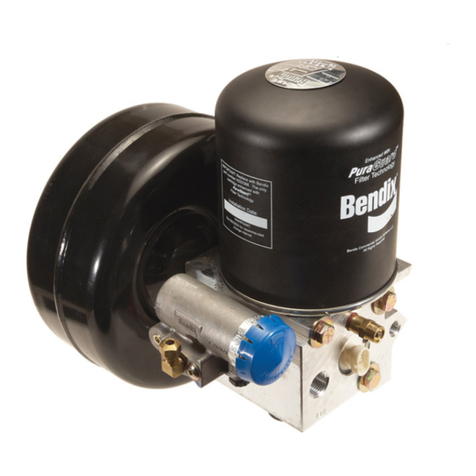
BENDIX
BENDIX AD-IS - Mounting instructions

BENDIX
BENDIX AD-1 AIR DRYER User manual

BENDIX
BENDIX AD-IP INTEGRAL PURGE AIR DRYER User manual
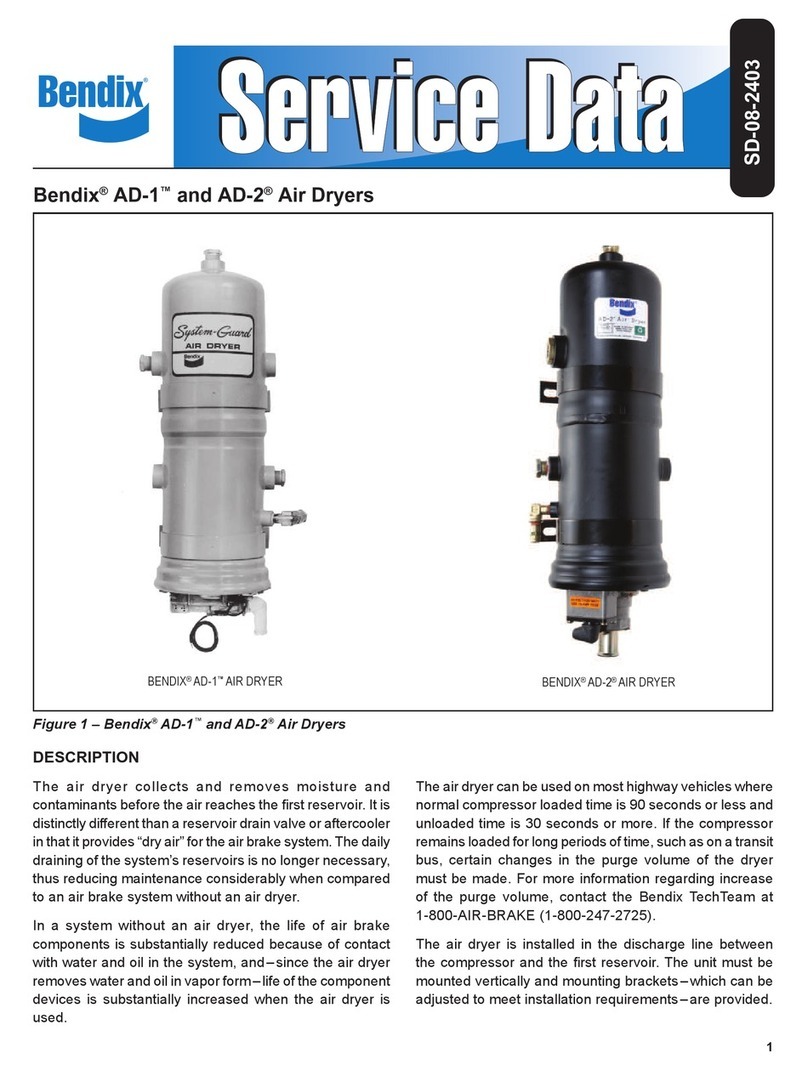
BENDIX
BENDIX AD-1 Mounting instructions
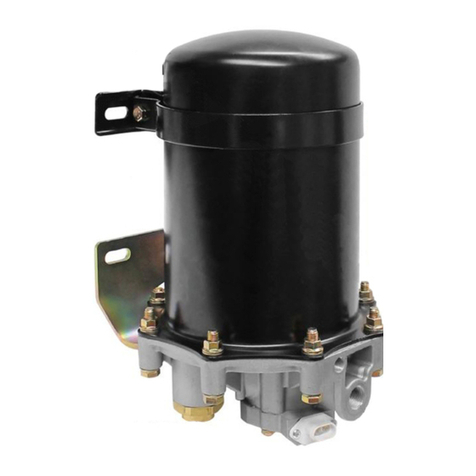
BENDIX
BENDIX AD-9 AIR DRYER User manual
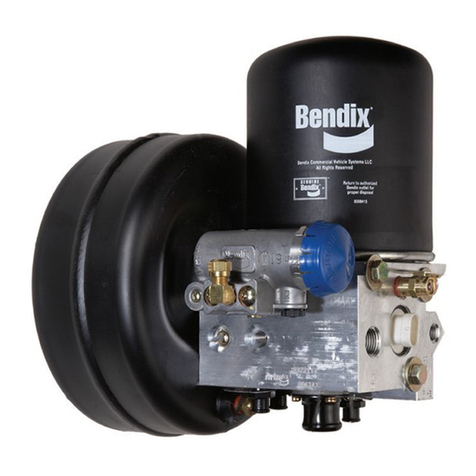
BENDIX
BENDIX SD-08-2418 User manual
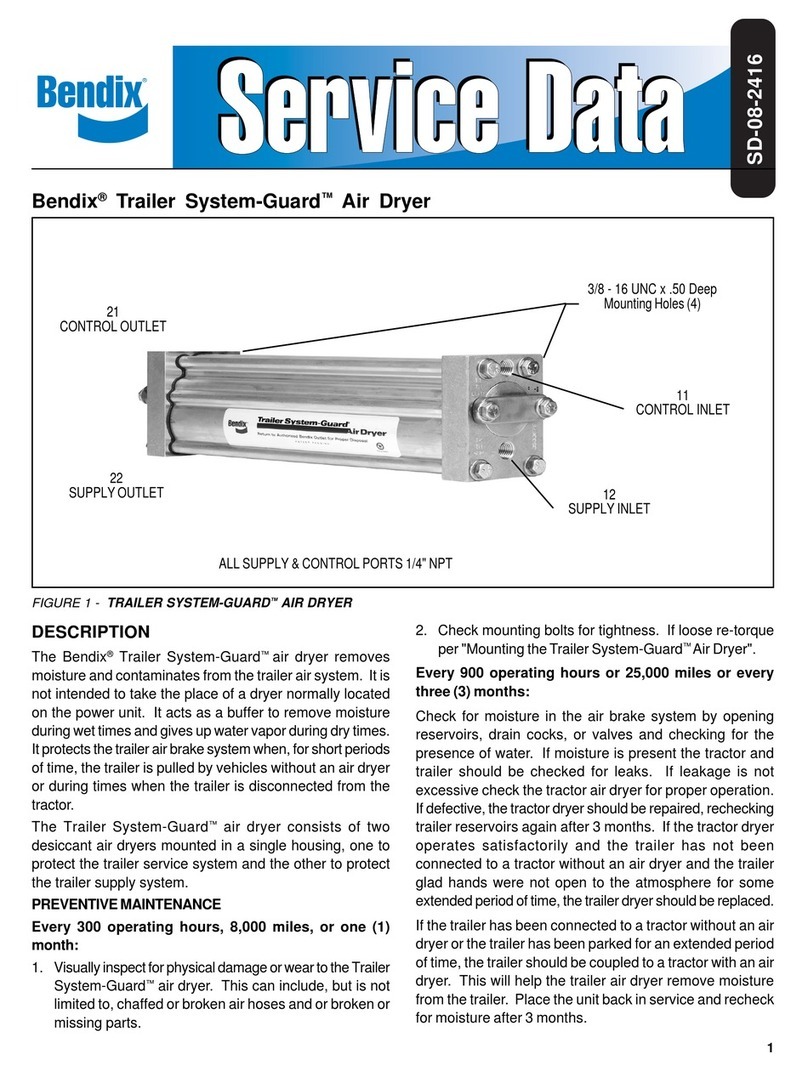
BENDIX
BENDIX TRAILER SYSTEM GUARD AIR DRYER User manual
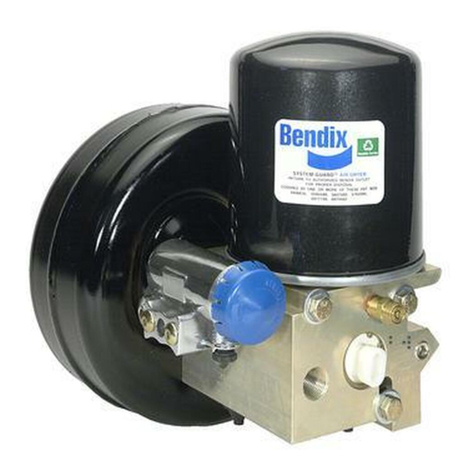
BENDIX
BENDIX AD-IS - User manual
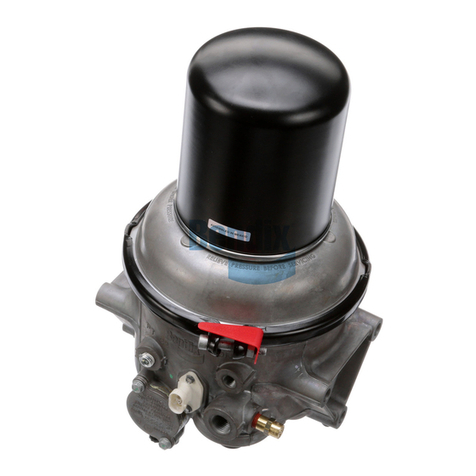
BENDIX
BENDIX AD-9si Mounting instructions
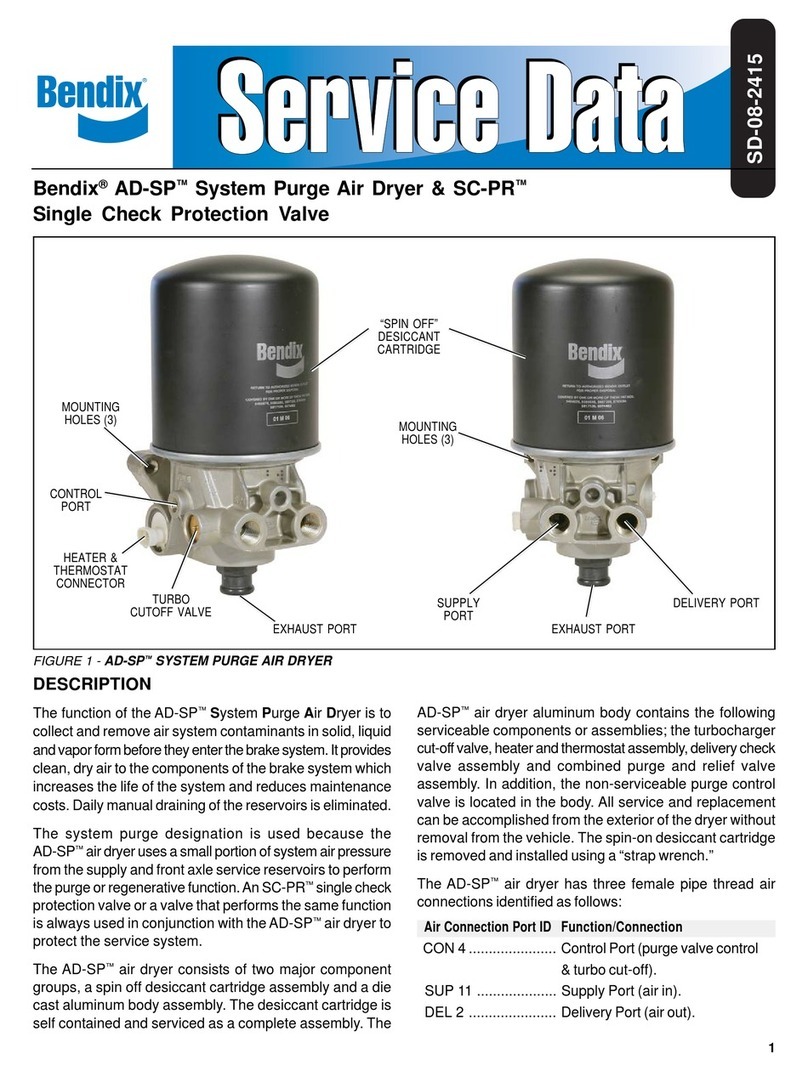
BENDIX
BENDIX AD-SP SYSTEM PURGE AIR DRYER User manual
